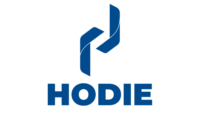2020 Food Safety Report | Supplier's Perspective | Poultry
The state of Salmonella interventions in poultry

There are several factors that can make controlling Salmonella in poultry difficult. Chief among them is the long-standing perception held by some operations that processing-plant interventions can eliminate most of the risk associated with any potential threat.
Processing has traditionally been viewed as the last line of defense for safeguarding consumers from foodborne disease. But for integrated companies, it’s important for the entire organization to understand the role it plays in helping the plant deliver the safest product possible.

Table of Contents:
What can be unclear is who in the poultry production chain is responsible for controlling Salmonella and how all roles in the poultry industry must work together to further reduce its presence in poultry products.
To help the poultry industry better understand industry perceptions of Salmonella and its control, Elanco Animal Health fielded a blind industry survey to identify steps the poultry industry is taking to control Salmonella and who the industry believes is ultimately responsible for the control of Salmonella. The survey was distributed to live-side production, food-safety and quality-assurance professionals in the poultry industry.
Who is responsible for Salmonella control?
All respondents agree Salmonella reduction is a shared responsibility across every production stage; however, there is a gap in belief of who is ultimately responsible for Salmonella control.
Respondents with QA/food-safety roles completely agree that live-side production is the first step of Salmonella control and more emphasis needs to be placed on the pre-harvest prevention of Salmonella. But those in live-side production roles agree to a far lesser extent. While live-side production believes Salmonella control is a shared responsibility, their opinions differ from QA on the importance of pre-harvest interventions. (See chart.)
More dialogue is needed between live-side production, processing and QA/food safety.
A majority of the respondents agree that more dialogue regarding Salmonella control throughout the poultry production chain is vital. Respondents also think live-side production and processing plants need to better understand how to control Salmonella in live-side production and how live-side interventions can economically benefit the entire poultry operation.
While some live-side production may believe they are not equal participants in Salmonella control as noted above, 65 percent of live-side production respondents feel they share the commitment and investment in Salmonella control and feel they need to do more to help their processing and QA/food safety counterparts control Salmonella.
Salmonella vaccine awareness is low
Salmonella vaccines, administered to breeders and broilers, are another proven tool to help the poultry industry reduce Salmonella loads prior to the chickens enter the processing plant. Despite the proven efficacy of Salmonella vaccines, lack of awareness and communication are the biggest constraints when it comes to why respondents are not using a live Salmonella vaccine to help reduce Salmonella loads in live birds.
The findings from these initiatives will be shared with the industry to help further educate the poultry production chain about live-side interventions that can effectively reduce Salmonella loads. Ultimately, it’s about protecting our industry and providing the safest poultry products to consumers. NP
Looking for a reprint of this article?
From high-res PDFs to custom plaques, order your copy today!









